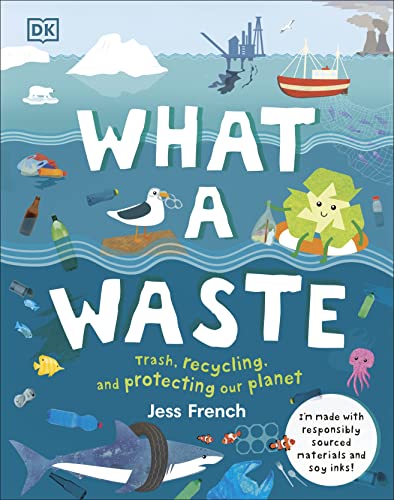Sustainable Fabrics for Fashion: A Guide to Building an Eco-Friendly Wardrobe
Disclosure: This post may contain affiliate links, meaning I get a commission if you decide to make a purchase through my links, at no cost to you.
Sustainable fashion refers to a clothing supply chain that prioritizes ecological and social responsibility. It aims to shift away from the fast fashion model, emphasizing sustainable practices throughout the entire lifecycle of clothing items. Here are key aspects of sustainable fashion:
Environmental Impact: Sustainable fashion seeks to reduce harm to the environment. It addresses issues like overproduction, pollution, and waste. By choosing eco-friendly materials and production methods, we minimize our ecological footprint.
Worker Welfare: Upholding fair wages and safe working conditions for garment workers is crucial. Sustainable fashion ensures that those who produce our clothes are treated ethically and have dignified working environments.
Animal Welfare: Beyond human welfare, it also considers the impact on animals. Sustainable fashion avoids materials derived from animal cruelty, such as fur or exotic skins.
Materials: The choice of fabrics matters. Sustainable fashion favors organic cotton, hemp, bamboo, recycled fibers, and innovative materials like Piñatex (made from pineapple leaf fibers) or cork fabric.
Circular Economy: Instead of the linear “take-make-dispose” model, sustainable fashion promotes circularity. It encourages recycling, upcycling, and extending the lifespan of garments.
Consumer Awareness: As consumers, we play a vital role. By supporting sustainable brands, asking questions about supply chains, and making mindful purchases, we contribute to positive change.
When it comes to fashion, the choices we make extend beyond aesthetics. The fabrics we wear impact the environment, from production to disposal. As consumers, understanding sustainable fabrics empowers us to make conscious decisions. Let’s delve into the world of eco-friendly textiles and explore some of the most sustainable options available today.
What Makes a Fabric Sustainable?
Before we dive into specific fabrics, let’s define sustainability. A sustainable fabric significantly minimizes the environmental impact compared to conventional alternatives. Here are the key factors that contribute to a fabric’s sustainability:
Organic and Chemical-Free Farming: Sustainable fabrics often come from organic crops. These crops avoid synthetic pesticides and fertilizers, promoting healthier soil and water systems.
Recycled Materials: Using recycled fibers reduces the need for virgin resources. Fabrics made from recycled plastic bottles or discarded textiles contribute to a circular economy.
Circular Manufacturing Processes: Sustainable fabrics consider the entire lifecycle. Circular processes minimize waste, reuse materials, and prioritize durability.
End-of-Life Prospects: A fabric’s disposal matters. Sustainable fabrics can be recycled, composted, or biodegraded, reducing landfill waste.
Top Sustainable Fabrics for Fashion
Let’s explore some eco-friendly fabrics that fashion brands are embracing:
Organic Cotton: Unlike conventional cotton, organic cotton is grown without harmful chemicals. It promotes soil health and conserves water. Look for GOTS (Global Organic Textile Standard) certified organic cotton.
Recycled Cotton: By repurposing post-consumer cotton, recycled cotton reduces waste. It maintains the same quality as virgin cotton while conserving resources.
Hemp: Hemp is a versatile plant that requires minimal water and grows quickly. Its fibers create durable fabrics suitable for clothing, accessories, and even home goods.
Linen: Made from flax fibers, linen is breathable, absorbent, and biodegradable. It’s perfect for warm weather and has a timeless appeal.
Bamboo: Bamboo fabric is soft, silky, and naturally antimicrobial. However, ensure it’s produced using eco-friendly methods, as some bamboo processing involves harsh chemicals.
Tencel (Lyocell): Derived from sustainably managed eucalyptus trees, Tencel is known for its silky feel and moisture-wicking properties. It’s also biodegradable.
Recycled Polyester (rPET): Recycled polyester is made from plastic bottles. It reduces plastic waste and offers the same performance as virgin polyester.
Econyl: Econyl is regenerated nylon created from discarded fishing nets and other nylon waste. It’s used in swimwear and activewear.
Piñatex: Made from pineapple leaf fibers, Piñatex resembles leather. It’s cruelty-free and supports local farming communities.
Cork Fabric: Harvested from cork oak trees, this material is lightweight, water-resistant, and renewable.
Remember, sustainable fashion isn’t just about what we wear—it’s about the impact we leave behind. By choosing fabrics that align with our values, we contribute to a more responsible and planet-friendly industry.
As consumers, we hold the power to transform the fashion landscape. Let’s celebrate sustainable fabrics and build a wardrobe that reflects our commitment to a greener future. Whether it’s organic cotton or innovative fibers, each choice matters. Together, we can weave a more sustainable narrative—one thread at a time.
SOURCES:
Sustainable Jungle: 31 Sustainable Fabrics For Lower Impact Fashion
Sustainable Review: 31 Sustainable Fabrics for the Most Eco-Friendly Fashion
Planet Pristine: 35 Ethical and Sustainable Fabrics for Eco-Friendly Fashion




